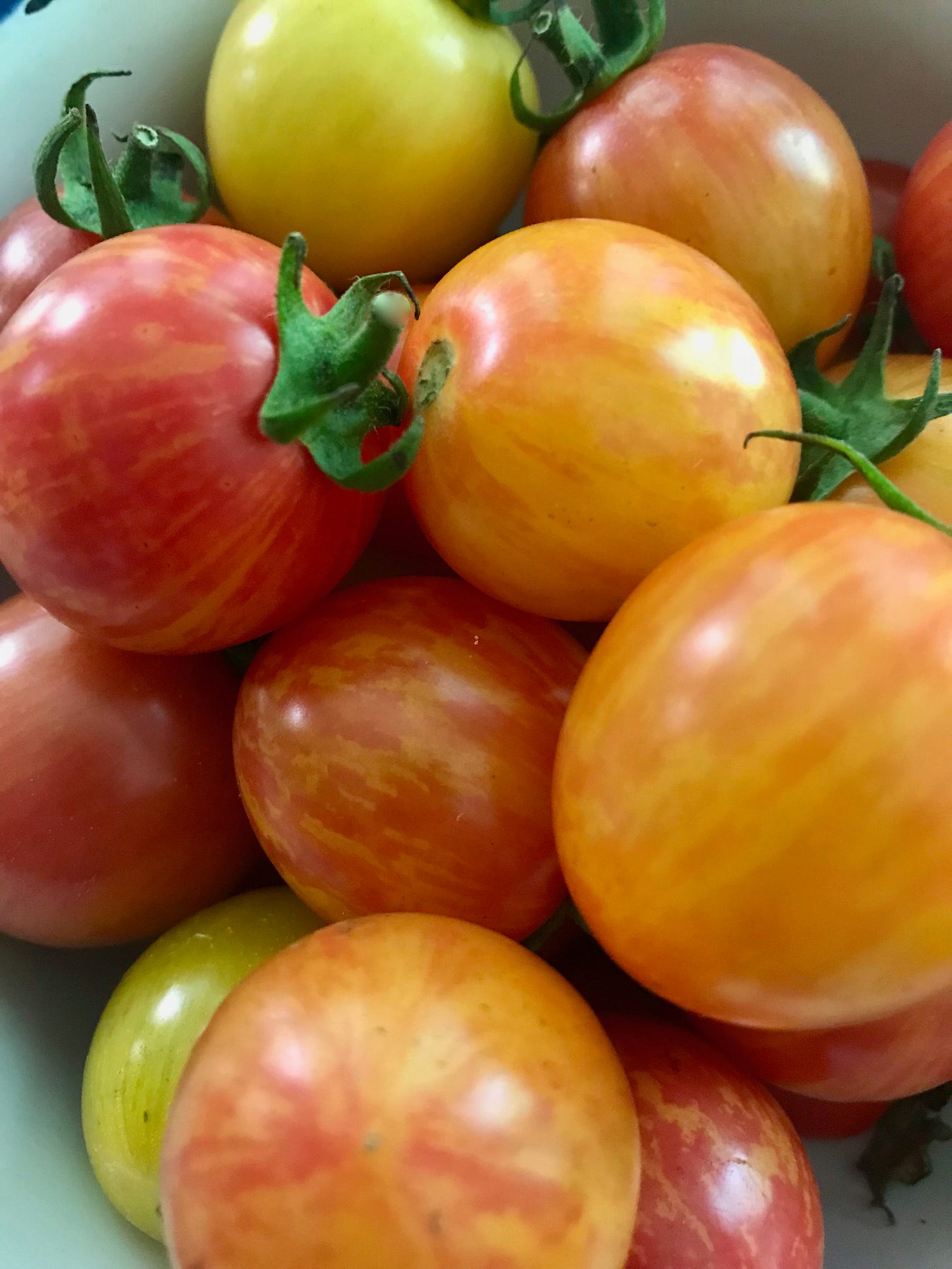Tomato Time
Sugo, Salsa, Marinara, and Red Gravy
It’s the time of year when I sit at my desk with a bowl of cherry tomatoes at my side. As I ponder the text in front of me, my hand automatically reaches out for yet another of the sweet-tart treasures. Such inspiration they deliver! Red ones, yellow ones, and the ones with a sort of dappled striped surface, orange with red streaks down the side. I inha…
Keep reading with a 7-day free trial
Subscribe to On the Kitchen Porch to keep reading this post and get 7 days of free access to the full post archives.


